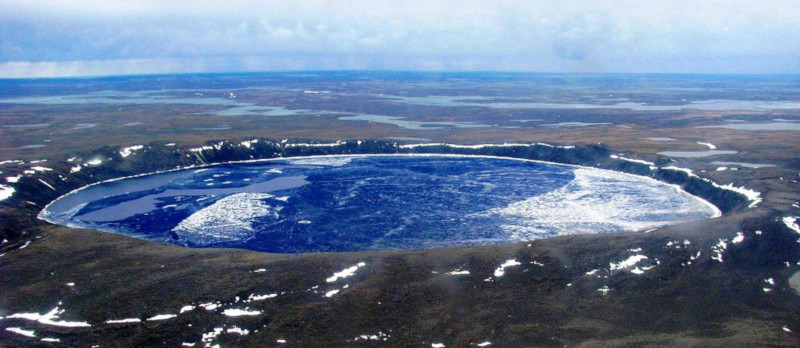
Pingualuit Crater Lake Facts
- The distinctive term of Pingualuit Crater Lake serves as the name of an astonishingly pristine lake. But the site also boasts an incredible history. In point of fact, this fantastic feature actually formed from a meteorite impact nearly 1.4 million years ago.
- As an understandable result, this lake represents a truly amazing geological site. That somewhat bold statement holds true due to several factors. One of its most noteworthy features remains its complete lack of either inlets or outlets.
- To the great surprise of many, the water levels stay maintained entirely by precipitation and evaporation. Further, this cycle happens extremely smoothly and evenly. It also has an incredibly low acidity level in comparison with most other lakes.
- As a result, the water of the awesome Pingualuit Crater Lake remains almost perpetually extraordinarily clear. In fact, this remarkable characteristic has earned it quite a reputation. This lake has been called one of the clearest lakes in the world.
- Finally, the site used to be known by another name entirely, creating some confusion. It formerly bore the name of the Chubb Crater. The name changed to its current one in 1999. Its current name comes from the language of the indigenous Inuit people.
Related Articles
Pingualuit Crater Lake Physical Description
The astounding feature known as Pingualuit Crater Lake fits in perfectly with its surroundings. This landscape itself has been frequently described as lunar. This very state of relative desolation, however, only serves to further highlight the magnificence of the site.
The marvelous location also has some very impressive measurements to recommend it. In fact, the incredible crater itself forms an almost perfect circle. It should also be further noted that this crater also measures an astonishing 2.1 mi (3.4 km) in diameter.
Yet its diameter isn’t its only fascinating characteristic. For one, the walls of the crater itself measure roughly 1,300 ft (400 m) high. These walls also rise roughly 521 ft (159 m) above the surrounding terrain. Plus, the beautiful lake itself averages nearly 876 ft (267 m) deep.
Its contents also stand out in many ways. The water contains a salinity level of less than 3 ppm, which actually ranks among the lowest on earth. As a result, the water nearly always appears remarkably clear. Objects as deep as 115 ft (35 m) remain visible to the naked eye.
Pingualuit Crater Lake Formation and Mystery
The breathtaking and fascinating Pingualuit Crater Lake formed in a relatively remote portion of the world. More precisely, it appears in a small section of North America. In point of fact, the marvel of Nature can be found on the Ungava Peninsula, in Canada.
The impact that created this astounding formation appears to have occurred approximately 1.4 million years ago. However, its age only serves as the beginning of the surprising facts about the site. That’s because the impact itself also seems to have been unique.
Instead of striking at an angle, as usually happens, the object struck the earth almost perfectly vertically. In an astounding occurrence, a nearly circular crater formed as a result of the impact. Analysis of the rocks indicates the meteorite was of the chondrite type.
As a result of glacial activity during the last ice age, the crater filled with ice. This action occurred over a great period of time. The withdrawal of the ice sheet left the crater itself filled with ice. The lake formed from the melting ice, and now comprises a closed system.
To the amazement of those who learn of Pingualuit Crater Lake, one last mystery remains. That’s due to the fact that a single species of fish inhabits the lake. These have adapted to survive with minimal sources of food. How these came to inhabit the lake remains a mystery.
Features Sharing Its Region
Check out our other articles on 6 Breathtaking Raptors, Visayan Spotted Deer, Onyx River, Wollemi Pine, Schaus Swallowtail, Tiger Rattlesnake, Indian Bullfrog, Basking Shark, Little Auk
